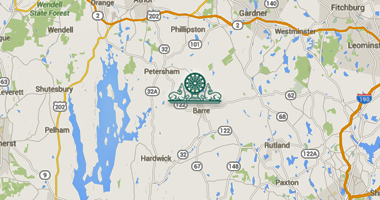
Learn more about Sebene’s upcoming course at BCBS this May on Buddha’s Teachings and Issues of Cultural Spiritual Bypassing.
IJ: What’s most essential for a deeper engagement with the work of diversity and inclusivity?
SS: To really engage in this work, there has to be some level of genuine motivation. If you have no interest at all, you might want to look at what that resistance or lack of interest is about—to see if it’s because you have no interest in understanding one of the dominant forces of our culture, or if perhaps there’s something else at play.
Also, different things are going to work for different people. I was talking to someone the other day who named six or seven books that have helped her understand and relate to this issue. Some of those books were personal narratives, some were more sociological, but reading was what did it for her.
For some people, it might be documentaries or online resources. For some, it might be group discussions in an affinity group where they can feel vulnerable and not worry about saying the wrong thing and being called a racist. For some, it might be engaging with a person of color and really trying to understand that person’s experience. It can begin simply by asking a person of color, “Can I ask you about these things?”
For most of us, it’s going to be a combination of all of these. Just like with practice, some of us gravitate to walking meditation, some to body scans, some to open awareness. If all they taught on your first meditation retreat was body scans, and you didn’t like body scans, you would probably think, “I hate meditation.”
 The resistance part is so important. A lot of people that see the headline for this interview are going to think, “It’s another interview about diversity,” and they’re just going to ignore it. What is that resistance about? Why is this not an important part of your Dharma exploration? Because Dharma is about everything, and this is a huge part of our lives. We’re not just practicing in order to become good meditators.
The resistance part is so important. A lot of people that see the headline for this interview are going to think, “It’s another interview about diversity,” and they’re just going to ignore it. What is that resistance about? Why is this not an important part of your Dharma exploration? Because Dharma is about everything, and this is a huge part of our lives. We’re not just practicing in order to become good meditators.
When we first started the Diversity Committee on BCBS’s board of directors, I half-jokingly said that we should really call it the Relevance Committee. Because it’s not about diversity. It’s really about being relevant to society. This isn’t some niche topic. This is the reality of the world. It’s the reality of our existence.
IJ: Is this diversity work fundamentally interpersonal and dialogue-based? Is that where both the internal and collective movement is going to come from?
SS: There are structural elements that can also support this work—offering scholarships to people of color and bringing in teachers of color. But, yes, I think the work is primarily about dialogue. BCBS is particularly well-suited to this work because it has the structures and forms to allow for these conversations. In some ways it’s much harder to do this work in a silent retreat center.
IJ: You and Brian Lesage are teaching a course here at BCBS this May about “cultural spiritual bypassing.” What’s it all about?
SS: John Welwood coined the term “spiritual bypassing” in the 80s to describe a tendency he witnessed among Western Buddhist converts to have a sort of premature transcendence through latching onto teachings around anattā (not-self) or Nibbāna.
We all have unresolved psychological issues and trauma. There’s a natural tendency to want to use the teachings to justify going to some peaceful place. But without true insight and letting go, the anger or hurt just gets repressed or ignored.
Brian and I added the word “cultural” to talk about the ways in which we do this collectively with cultural issues, which can be just as painful or charged as anger and depression.
The discomfort around race is extremely painful—not just for people of color, but for white people also. Just as we don’t want to feel our personal pain, whether it’s depression or back pain, we also often avoid touching into the pain of oppression and separation. Then we might use the teachings to justify avoiding what’s right in front of us.
IJ: How can we use the teachings to deal with these cultural issues that people sometimes put in a box and hide in the basement?
 SS: This is why dialogue is such an important part of this work. Dialogue gives us the chance to practice using the tools of awareness and wisdom and compassion to meet these issues.
SS: This is why dialogue is such an important part of this work. Dialogue gives us the chance to practice using the tools of awareness and wisdom and compassion to meet these issues.
Brian and I also want to take it a step farther and look at the ways in which certain aspects of the teachings have been highlighted in the transfer from East to West, especially the emphasis on silence and rational discourse and the labeling of certain practices as cultural baggage. The version of the Dharma that we have in the West isn’t necessarily the truth. It’s just one way of seeing these teachings.
It’s hard to take the salt out of the stew, and it’s hard to name the water that you’re swimming in. Still, it can be useful to ask what basic elements we have inherited and that we can all agree on when practicing together? Can we acknowledge that these forms and teachings have come to us through systems—whether patriarchal systems of the Buddhist lineages or the Western systems of modern and contemporary thinking.
IJ: Diversity work often gets put on the side of social engagement. Then the question arises, “What’s the relationship between social engagement and formal practice?” Do you find yourself having to convince people why they should care about this work?
SS: Embedded in your question is the assumption that members of the dominant culture or institution should be engaging in this work for other people.
But this conversation around race and oppression and inclusivity is about everyone’s freedom. That’s why they’re called “unconscious biases”—because they’re unconscious. Waking up to this stuff is for everyone’s benefit. It isn’t only about wanting to bring people of color into your Buddhist community. It’s about seeing our minds and hearts clearly.
I was recently thinking about all this, and the phrase “the unconscious whiteness of being” came to me. Because that identification is always there. It’s a question of whether people can see how they are operating in certain situations from an unconscious place of “whiteness.”
It might show up when a person of color walks into the meditation hall, and you see their race. But when a white person walks into the hall, maybe you don’t see their race. All sorts of projections and associations might be happening around the black guy, which might not be happening around the white woman.
 This applies to other things, too, but with race it’s particularly charged because of all the hundreds of years of stories and conditioning our society has had us all buying into. For people of color, this might show up as internalized oppression or stereotype threat. For white people, it’s all the biases that come up. It’s hard to look at, and it’s natural for people to want to bypass this stuff, because it’s so painful to look at the ways in which we’re separating ourselves from one another. But don’t we want to see clearly what’s happening in our hearts and minds?
This applies to other things, too, but with race it’s particularly charged because of all the hundreds of years of stories and conditioning our society has had us all buying into. For people of color, this might show up as internalized oppression or stereotype threat. For white people, it’s all the biases that come up. It’s hard to look at, and it’s natural for people to want to bypass this stuff, because it’s so painful to look at the ways in which we’re separating ourselves from one another. But don’t we want to see clearly what’s happening in our hearts and minds?
IJ: And that identification with “whiteness” is there all the time, even when no people of color are in the room.
SS: Whiteness is the water. Just naming and seeing that can be a really important exploration for white people. It’s one reason why affinity groups are great—not just for people of color, but also so that white people can start to see this.
There’s a lot of pain around this stuff, but it doesn’t have to also be layered with guilt. It’s uncomfortable to feel the anger and to feel the hurt. Under rage is usually pain and sorrow and grief. Under the guilt is the fundamental pain of separation—the realization that this society has caused me to accept that there has to be this huge division and separation.
Why are we segregated? Isn’t it crazy that we’re segregated in this way—not just physically, but materially and culturally? It serves a purpose. And that’s where the historical, contextual, sociological understanding of things can help.
People sometimes ask, “Why do we have to do Undoing Racism trainings?” These trainings can help us to understand why we are the way we are—the same way that going to therapy helps us understand why we have so much rage against our mother.
IJ: Why isn’t there more talk about using formal practice to address these unconscious biases? Why aren’t there retreats specifically about undoing unconscious biases around race?
SS: First of all, there aren’t many teachers of color. There’s a lot of work being done among white teachers, but it takes a long time to understand these issues. White supremacy is a loaded term for a lot of people, but it’s just the basic privileging of white culture and white people over people of color and other cultures. All of which means white teachers may have little to no knowledge about how to address these issues, and sometimes not enough humility about that fact.
Part of the issue is not valuing the contributions of people of color. For example, except for a few Nobel Prize winners and some reading assignments in school, most white people don’t seek out black authors. On the other side, you have a lot of people of color who are very well versed in this stuff. The average person of color who’s coming to a retreat has done a lot of work around not only their personal experience of oppression, but has also done a lot of actual study. I did an MA in Media Studies, but my focus was critical race theory and cultural studies.
People of color have a lot to offer, but we don’t have enough Dharma seats. So the offerings are coming in the form of these trainings and discussions because there aren’t many teachers that have been given that empowerment. But it is starting to happen. And at the same time, some white teachers are catching up to this conversation. My Dharma brother Greg Snyder wrote a great piece for Lion’s Roar about using Dogen’s maxim to study the unconscious whiteness of being. Greg says that to study the self is to study whiteness, because that’s the self that’s been constructed.
It’s starting to happen. It’s going to be clunky. And it’s going to be uncomfortable. And it’s going to be messy. We have to get over thinking that skillful has to equal comfortable. Because this work is uncomfortable.
It’s not just about helping people of color and creating more inclusive communities. This is really about seeing something that’s not normally seen—about making the invisible visible. Because of social media and more widespread use of cameras, the issues around racial oppression are becoming much more apparent. Many people who didn’t realize the extent of the violence and trauma and oppression are now seeing it.
This work can be confusing. And it is inherently complex. There’s not going to be one neat answer. And we’re always going to have to hold those two truths—that it is about oneness and interconnection, and it’s also about these relative realities that we live in—these social identities and cultural conditions.
IJ: As a person of color, does it feel like positive change is happening at an appropriate pace?
 SS: I don’t know if appropriate is the right word. I’ve learned that things just take time. Even in some of the people I know and the changes I’ve seen in them and their understanding—it’s taken some time. I would love for it to be like those Zen enlightenment stories. But what those stories don’t talk about is the years and years that the practitioner was sitting in a cave getting their butt hardened with hours and hours of practice.
SS: I don’t know if appropriate is the right word. I’ve learned that things just take time. Even in some of the people I know and the changes I’ve seen in them and their understanding—it’s taken some time. I would love for it to be like those Zen enlightenment stories. But what those stories don’t talk about is the years and years that the practitioner was sitting in a cave getting their butt hardened with hours and hours of practice.
The internal and collective work has to be put in for change to happen. We need organizations to remain committed to these conversations and trainings and developing skillful means in order for real, lasting change to happen. Demands can be made, but there also has to be a realistic understanding of the work that has to be put in. And then that work has to be put in.
Some people are extremely resistant to doing this work, and most frustrating for me is when that resistance is put in terms of a superior Dharmic understanding. Well-meaning, white sangha members continue to say that this work is divisive and goes against the teachings—as if people of color have never thought about anattā or interdependence. Like it never dawned on us. That kind of Dharma arrogance is more frustrating than the pace of change.
IJ: I’ve heard you talk about addressing the diversity issue by bringing in a more feminine energy. Is that an essential aspect of this movement?
SS: Historically there’s been a major distortion of these archetypal feminine qualities. Patriarchy has been around a lot longer than racism. We’re not only talking about gender. We’re talking about yin and yang—elemental qualities of feminine and masculine that exist in everything.
On a human scale, there’s been an overemphasis of the masculine energy, which can be aggressive and dominating. The feminine is the receptive principle. It isn’t passive, it’s a deep receptivity that’s also generative.
This feminine receptivity doesn’t always show up in the silence. Even though nobody’s talking, there still might be a lot of people trying to get somewhere—trying to transcend. Even though we teach against that all the time, there is often an orientation toward getting out of here rather than just opening to what is here. The transcendent gets prioritized over the immanent.
Seeing this energy is fundamental to understanding the issues around race. Oppression and colonialism and industrialization, which led to a lot of the racial hierarchy that we have, is fueled by patriarchal dominant cultures. All of these systems work together.
For example, why is the bhikkhunī issue not talked about more? It would be totally impossible for us to treat people of color the way we treat nuns. There would be riots. I’ve been talking about the bhikkhunī issue more lately, and some people say it’s the first time they’ve ever heard anyone talk about it from the dais. Maybe it’s talked about more on women’s retreats, but I think everybody needs to be part of this conversation.
IJ: Is it surprising that these misogynist tendencies are still continuing, even in a community that has an overwhelming female majority?
SS: Patriarchy is much more unconscious because it’s so much older. In a way it’s much more difficult to unthink something that just feels like the natural order.
The conversation around race, by my estimation, has been happening in the Insight community for around 10-12 years—even more so in the past few years. But there’s really been no conversation around gender. So how would the conversation happen? How would it even begin? People are so comfortable with just sitting in silence. They don’t necessarily know that they want to do more.



